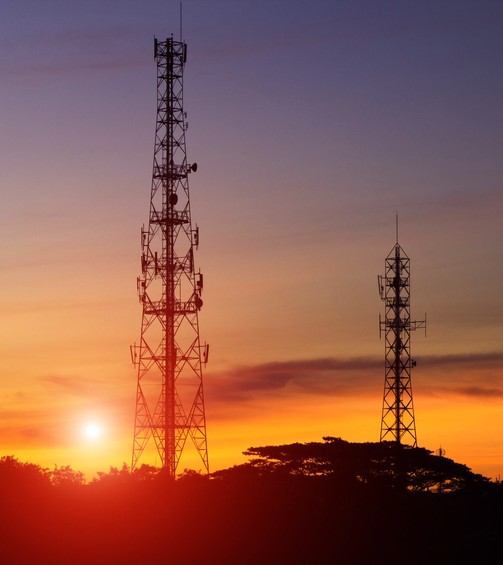The Government has began the auction of mobile telecom airwaves from today (1st March, 2021). Around 2250MHz of spectrum, worth nearly 4 Lakh crore at the reserve price, will be sold across various bands. Though the Government has not specified an exact date, the designated 5G auction is likely to happen very soon. Meanwhile, leading telecom companies like Jio and Airtel have already started pilot projects for 5G on a trial basis and getting ready for the launch once auction happens.
In this background we publish below an article on 5G written by Paoto Collela, former head of Ericsson, India Region, a leading company in the field of telecom technology’
We have innumerable studies that are trying to quantify and predict the material impact of Fifth Generation (5G) and the Internet of Things (IoT). Some of these focus on the cost aspect and others on the value to society. However, even as these studies are ongoing, it is evident that 5G will spur innovation across many industries and provide a platform enabling emergent technologies such as the IoT to become an integral part of our economy and lifestyle.
5G is the foundation for realising the full potential of IoT. While 5G is set for commercial availability sometime around 2020, the industry is already working to develop new global standards and pre 5G products to benefit industries everywhere. Ericsson AB’s latest Mobility Report points out that there will be 550 million 5G subscriptions in 2022 and Asia Pacific will be the second-fastest growing region with 10% of all subscriptions being 5G in 2022.

More than just speed
The first generation mobile network (1G) was all about voice. 2G was about voice and texting; 3G was about voice, texting, and data; 4G was everything in 3G but faster; and 5G will be even faster; it will be fast enough to download a full-length HD movie in seconds.
But 5G is much more than just fast downloads; its unique combination of high-speed connectivity, very low latency, and ubiquitous coverage will support smart vehicles and transport infrastructure such as connected cars, trucks, and buses, where a split second delay could mean the difference between a smooth flow of traffic and a 4-way crash at an intersection.
5G will enable us to control more devices remotely in applications where real-time network performance is critical, such as remote control of heavy machinery in hazardous environments, thereby improving worker safety, and even remote surgery. To learn more about the opportunities that 5G will create, Ericsson commissioned a detailed survey of more than 650 decision-makers from eight key industries. This threw up some interesting insights. For example, a significant majority of healthcare executives surveyed (73%) expect next-generation mobile networks (5G) to allow them to implement new services and products that will improve quality of life for the general public. 5G promises to make remote medical care a reality—and to be a change agent for the future of the industry.
Two companies, Imaginalis and El.En, are collaborating with Ericsson to use the latter’s expertise and technologies to make surgery more precise, less expensive and reduce side effects for patients. One of the first activities planned is to aid Imaginalis in advancing remote diagnosis by improving mobile uplink connectivity and data compression to transfer images and perform remote analysis. With 5G wireless connection, the entire workflow could become easy and intuitive, making it possible to perform a pre-planned surgery by an expert surgeon in Cambridge or Boston, when the system and patient are located elsewhere. For a country like India it has the potential to provide unmatched cost-effective and better remote healthcare benefits.
On way to 5G and Internet of Things
With connectivity at the heart of industry transformation, 5G will have a key role to play—not just in the evolution of communication but in the evolution of businesses and society as a whole. On the road to 5G, operators will need to do more than just evolve networks; they will need to transform their business to address new opportunities.
Operators have excelled in connecting phones, tablets, and other devices, but connecting and managing growing numbers of cars, meters, machinery sensors and consumer electronics profitably will require innovative business models. Today, the vast majority of operator IoT revenues come from connectivity, but in the next 5 years, the revenue will also come from service enablement platforms, apps, and services. Operators capable of creating and managing an ecosystem of service partners, refining data from their IoT platforms and turning bulk data into smart data will be able to create incremental revenue based on the value of the data rather than just the volume.
Telia Co. AB and Telenor Connexion AB are examples of operators who are already adding IoT value beyond connectivity by providing intelligent platforms, facilitating ecosystem collaboration, and even becoming a transformation partner to other industries. Ericsson is already working with more than 27 leading mobile operators worldwide on 5G networking and use cases, including 5G field trials.
IoT presents both operators and industries with a fertile ground for innovations and new ways of engaging their end customers. Key success factors will be the ability to launch new services with a short time-to-market from idea to commercial offering combined with the right business models and access to a rich array of complementary offerings from ecosystem partners.





